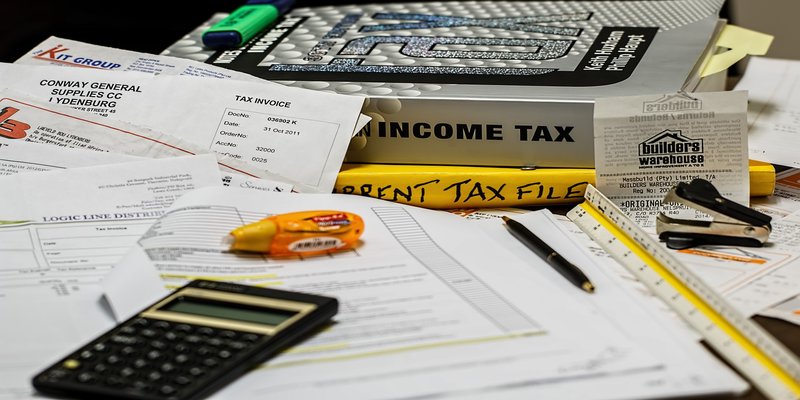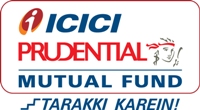7 mistakes you must avoid while filing your Income Tax return

Only 7 days are left and its time you file your Income Tax return (ITR) for the financial year 2014 – 15 (Assessment Year 2015 – 16), if not filed already. This is the time of the year when most tax payers run around at the last moment to file their respective tax returns and thus prone to making silly mistakes which results in filing a defective return or not getting the income tax refund in time. Today, therefore, we will discuss what could be the probable common mistakes and how to easily avoid them in order to file a correct Income Tax return (ITR).
First check whether you require filing an ITR
If you are unsure whether you are required to file an ITR for FY 2014-15 or not, then check the following conditions. If you fall in any of the following situations then it is a mandatory for you to file ITR, as per the Income tax Act
- Individual having income from salary, income from other sources, like interest, commission and pension and if the total gross income (before allowing any deductions under section 80C or any other sections) exceeds Rs. 250,000 in the financial year 2014 - 15. For senior citizens (above age 60 but less than age 80), this limit is
र300,000 and for super senior citizens (Above age 80), this limit isर500,000 - If you have income from capital gains and want to carry forward a loss under a head
- If you want to claim an income tax refund
- If you are an assessee other than companies having a Gross Turnover of below
र1.00 Crore - Income from House property and also if you have taken a housing loan and claiming Income tax rebate under section 80C (Home loan principal amount) and Section 24 (Tax benefit on interest on home loan)
- Individual professional having gross receipts below
र2,500,000 (Rupees Twenty five Lacs)
Choosing the right ITR form
It is very often that tax payers are not aware about which ITR form should they use to file their return. They often choose the wrong forms and therefore declare incomes in appropriate heads. Let us understand this by examples. ITR-1 – This is commonly known as SAHAJ and applicable for tax payers having salary or pension income, income from one house property and income from FD interest, NSC, dividends of shares and mutual funds. Please note no business income or capital gain can be shown in this form.
ITR-2 – If you have capital gains and income from multiple properties but no income from business then it is the right form for you. But, if you have no capital gains then you should use ITR-2A
It has been observed by various IT experts that tax payers having commission income show it under salary income and file ITR using the SAHAJ Form. This is incorrect as commission income is treated as business income and therefore the appropriate form is ITR-4. Experts have also observed that tax payers report house property or rental income as ‘Income from other sources’ and use SAHAJ form. This is again wrong and here one needs to file ITR-2
With the above examples, I am sure, you must have understood the importance of various ITR forms and why and how to choose the right one for you.
Incomplete or wrong contact and bank details
Tax payers often provide incomplete mailing address or PAN number. This results in wrong filing of the ITR. The other mistake tax payers make is providing their official or company email IDs and mobile numbers. Please note that you should always provide your personal email ID and mobile number as you might change your job. Please also note that all communications by the IT department is done through email and mobile, this includes confirmation of filing your IT return, receipt of return copy by CPC Bangalore, electronic verification of ITR-V, processing of the ITR, despatch or credit of your IT refund or any notice etc. IT department even conveys the Speed post consignment details through sms and email once your IT refund is despatch and ITR is accepted. Therefore, the correct email Id and mobile numbers keeps you updated about everything related to your ITR.
If you wish to change your mailing address permanently, then you should change the address in your PAN CARD first. This can be done by applying for rectification of the same quoting your PAN number. Many tax payers provide the current address in the ITR but do not care to change the address in PAN. Therefore, they continue to receive communication and refunds in their old address.
From this year onwards the tax payers have to report all their bank accounts. Therefore, apart from accurate Bank name and Branch, one should also provide the correct IFSC and MICR codes. This helps in getting the refunds through direct credit in your bank account. However, if you do not provide these details, chances are that you will get the IT refund through cheque in your mailing address.
Errors in TAN Number
You have to be very careful while entering this number. TAN is the Tax deduction account number of the tax deductor (it could be your employer or anyone who has deducted tax from you). Any mistake in entering the wrong TAN number will result in denial of the tax deducted under your PAN as IT department will fail in locating the correct deductor. This might result in issuing a demand notice by the IT department.
Have you checked the Form 26As
Before filing your ITR, you must check all the Form 16 and 16As received from various deductors if these are showing in Form 26As. Form 26As is one form which shows the details of tax deducted at source, details of tax collected at source, details of tax paid, details of paid refund, details of AIR transactions etc. If you are registered with net banking or online banking in your bank account, you can download this report from your bank account website. Alternatively, you may register at TRACES (TDS reconciliation Analysis and Correction Enabling System) of Income Tax department http://contents.tdscpc.gov.in/
If TDS has been deducted against you PAN number from your various incomes such as salary paid by your employer, banks or anyone, it will show in this report and it be reduced from your total tax liability. Remember, these are the taxes which has already been deducted from your various incomes and deposited against your PAN and therefore you must include these incomes also in your ITR on which TDS is deducted.
Remember to E-verify the ITR or send ITR-V signed copy
Filing the ITR through online is not the end of the tax filing. In fact it is incomplete if you do not send the ITR-V to the department or electronically verify the ITR.
How and where to send the ITR-V – If you have not verified your ITR electronically then you need to despatch the ITR-V to Income Tax Department – CPC, Post Box No.1, Electronic City Post Office, Bangalore – 560020 within 120 days from the date of filing your ITR online. Please do not send the same through courier, you should only use speed post or send it through ordinary post.
Electronic verification of your ITR – This concept has started from this year only. For E-verify your ITR, you need to login to the Income Tax website- incometaxindiaefiling.gov.in and navigate to ‘E-Verify Return’ option of the main menu. There are two ways to verify – Link your AADHAR CARD number with your PAN number and generate an OTP (One time password) which is sent on your registered mobile number. Follow the process and verify the ITR online.
The other way to e-verify is to generate an EVC (Electronic verification code) which is generated and sent to your Email Id or mobile number. You can then use this code to verify the return. However this method is not useful if your total Income exceed र 5 Lacs or you are seeking some tax refund.
The most important point to note here is that if you forget to e-verify your income tax return or do not send the ITR-V to CPC Bangalore then the Income Tax Department may consider that you have not filed your ITR and therefore they might not process your ITR.
Conclusion
We would like to conclude by saying that if you follow or take care of the above points then you can successfully file a correct ITR. We have tried giving the best explanation but you may still have some questions or procedures that are not covered in this article, therefore, you must contact a TRP (Tax return preparer) http://www.trpscheme.com/, or your Tax Consultant or Chartered Accountant before and while filing your tax return.
RECOMMENDED READS
LATEST ARTICLES
- Why you need to have hybrid mutual funds in your portfolio: Different types of funds Part 2
- Why you need to have hybrid mutual funds in your portfolio: Misconceptions Part 1
- Which is the best time to invest in mutual funds
- Economic slowdown: Is it real and what should you do
- Importance of liquidity in investing: Mutual funds are ideal solutions
An Investor Education Initiative by ICICI Prudential Mutual Fund to help you make informed investment decisions.
Quick Links
Follow ICICI Pru MF
More About ICICI Pru MF
POST A QUERY




